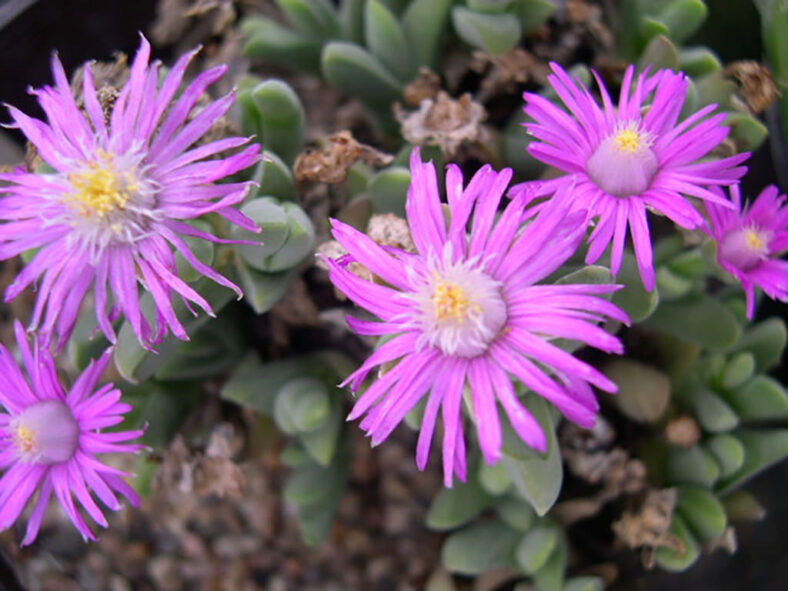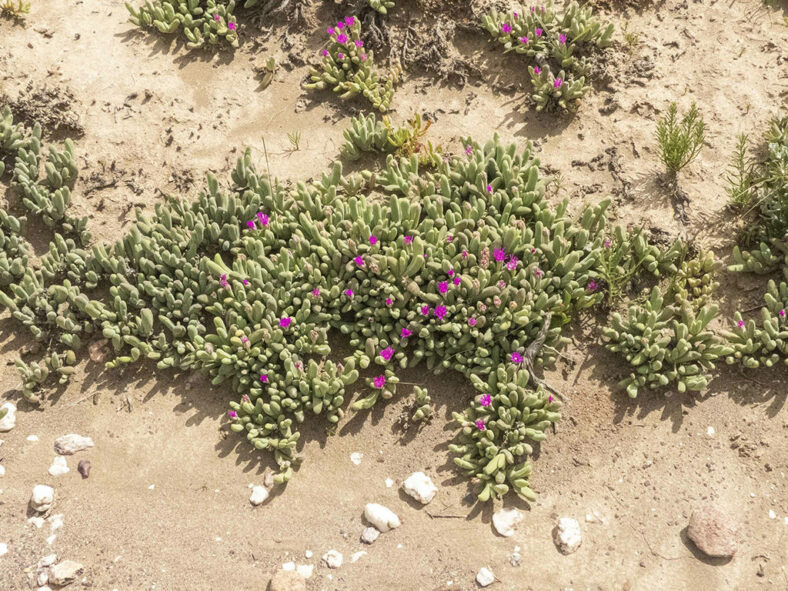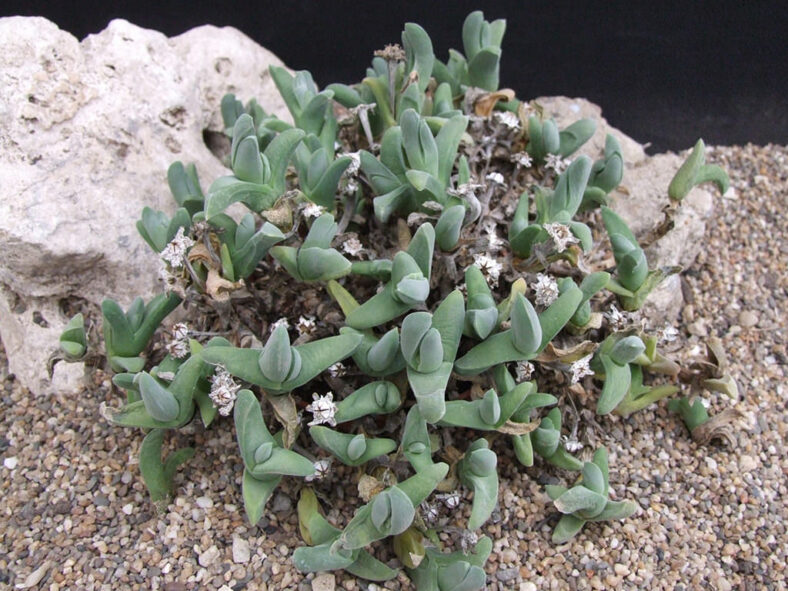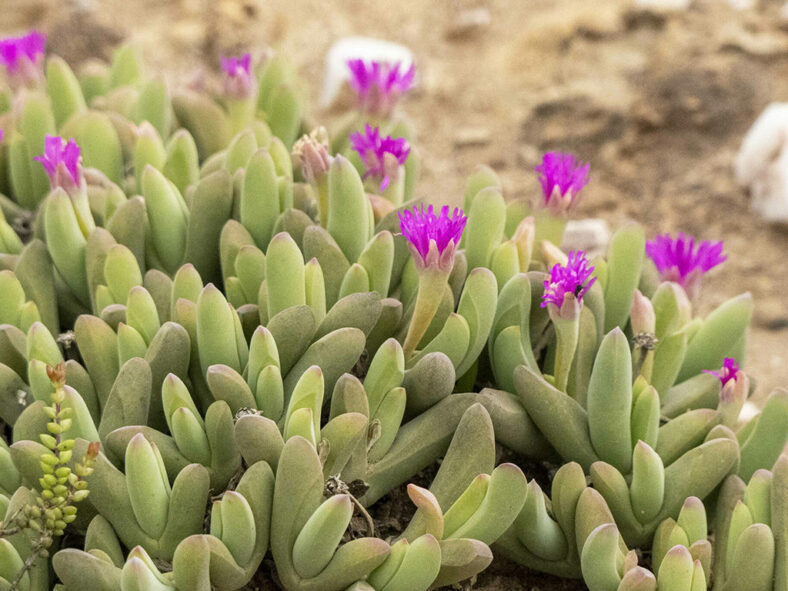If you're looking for a small, easy-to-grow plant, Gibbaeum angulipes is an excellent choice. This versatile plant is perfect for containers or rock gardens and forms lovely clumps that are especially eye-catching when in bloom.
Scientific Name
Gibbaeum angulipes (L.Bolus) N.E.Br.
Common Name(s)
Mat Humpfig
Synonym(s)
Mesembryanthemum angulipes
Scientific Classification
Family: Aizoaceae
Subfamily: Ruschioideae
Tribe: Ruschieae
Genus: Gibbaeum
Etymology
The specific epithet "angulipes" (pronounced an-gyoo-LY-peez) means "having angled peduncles" and refers to the angled flower stalks of this species.
Origin
Gibbaeum angulipes is native to South Africa. It grows in bare, loamy places on north-facing slopes in the northern Langeberg Municipality of the Western Cape province.
Description
Gibbaeum angulipes is a dwarf succulent with stems that grow along the ground and bear green to gray-green, somewhat velvety leaves. The plant can spread and form a mat up to 6.6 feet (2 m) in diameter. The stems can grow up to 2.4 inches (6 cm) long and have several short branches, each with four leaves. The leaves are unequal, erect to spreading, fused at the base, triangular to round in cross-section, and can measure up to 1 inch (2.5 cm) long and 0.35 inches (0.9 cm) wide. Sometimes, the tips of the leaves are tinged red.
In the spring, Gibbaeum angulipes produces solitary flowers on fleshy, erect, angled stalks with unequal, pointed sepals. The flowers can reach a diameter of 1 inch (2.5 cm) and have narrow, purplish-pink, slightly shiny petals surrounding a whitish, staminal center. The fruits are 6- or 7-locular capsules with a short funnel-shaped base and semi-globose top.

How to Grow and Care for Gibbaeum angulipes
Light: Gibbaeum angulipes requires bright light but not too much direct sunlight. So, a windowsill that receives 4 to 5 hours of direct sunlight in the morning and partial shade in the afternoon will be a perfect spot for indoor growing.
Soil: The plant thrives in porous soil, allowing the water to drain away quickly. Therefore, use commercial soil for succulents or make your own well-draining mix.
Temperature: High temperatures are not a problem as long as there is plenty of fresh air, but this plant is not cold-hardy. It grows best in USDA Plant Hardiness Zones 9b to 11b, with average minimum winter temperatures ranging from 25°F to 50°F (- 3.9°C to 10°C).
Watering: To keep your Gibbaeum angulipes healthy, it is most important to know when, how much, and how often to water it. During the dormant period, usually in winter, the plant requires little or no water. From spring to fall, water it thoroughly but allow the soil to dry between waterings.
Fertilizing: As long as you repot this plant every two years, it does not need fertilizer.
Repotting: Even if it can stay happy in the same pot for years, once in a while, you can repot your plant to give it more space anytime during the growing season. However, the best time is at the beginning of the growing season.
Propagation: One way to propagate this plant is by dividing clumps, which is quite simple. Another option is to start from seeds by sowing them in well-draining soil during spring. The best time for dividing is late spring or early summer.
Learn more at How to Grow and Care for Mesembs.
Toxicity of Gibbaeum angulipes
Gibbaeum angulipes is considered non-toxic and safe around kids and pets.
Links
- Back to genus Gibbaeum
- Succupedia: Browse succulents by Scientific Name, Common Name, Genus, Family, USDA Hardiness Zone, Origin, or cacti by Genus
Photo Gallery
Click on a photo to see a larger version.


